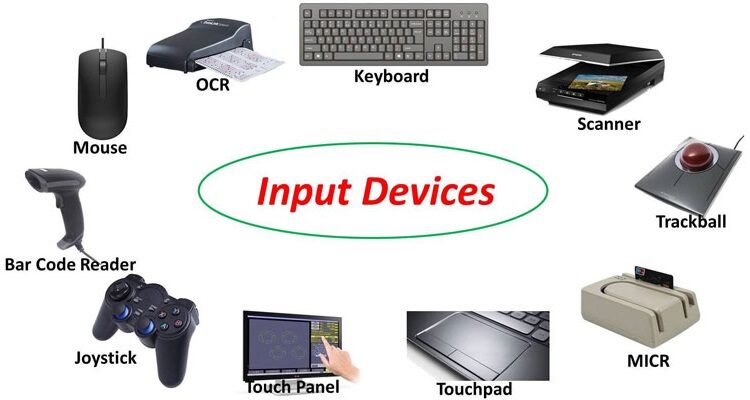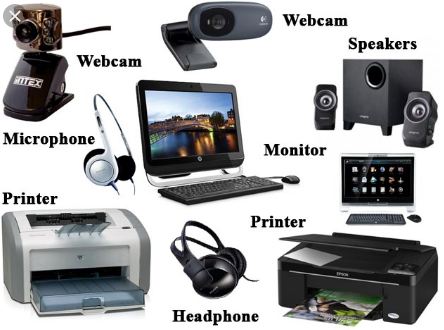Computer systems process large amounts of data while at the same time delivering valuable information to users. To facilitate this intricate interaction between humans and machines, input and output devices act as the bridge that enables seamless communication.
What Is An Input Device?
An input device is a piece of hardware component used to provide data and control signals to an information processing system such as computer or information device. It enables the communication between humans and machines, enabling users to provide instructions, commands, or raw data that the computer can process.
Input devices come in various forms and cater to different input methods based on the nature of the data being entered. Common inputs devices on modern computers include keyboards, mouse and touch screen which are used to enter commands and data directly. Other examples of input devices include scanners, digital cameras, joysticks and microphones.

What You Need To Know About Input Device
- An input device is used to input data or instructions into the computer system. It allows users to communicate with the computer by providing data or commands.
- It converts physical inputs (e.g., keystrokes, mouse movements) into electronic signals or data that the computer can process.
- It works for translating user-friendly instructions into a machine friendly.
- An input device can send data to another device but it cannot receive data from another device.
- Input devices are necessary for a computer to receive commands from its users and data to process.
- Input devices are controlled by the user.
- Input devices are relatively complicated as they have complex coding that ensures that the user can interact with the computer correctly.
- Examples of input devices include keyboard and mouse, microphone, webcam, image scanner, Microphone, pointing device, touch screens, graphics table, Optical character reader (OCR), joystick etc.
What Is An Output Device?
Output devices are components of computer systems that present or display the processed data to users or external systems in a human-readable or machine-interpretable form or it can simply be described as any hardware component that use received data from a computer to perform a task.
These devices take the output generated by the computer and convert it into various formats, such as text, images, audio, or video. Output devices communicate the results of computations, provide feedback, and in the process help users to perceive and interact with the information produced by the computer.
The data received by the output device can be text, graphic, tactile, audio or video. Three most commonly used output devices are a printer, a monitor and speakers. A printer is used to generate a hard copy or graphics on a physical medium such as paper. Speakers are used for communicating with the user by voice or for playing music or the soundtrack to a movie whereas a monitor displays visual output such as text, graphics and videos on a screen.

What You Need To Know About Output Device
- An output device is used to display or present the results of processed data from the computer. It allows the computer system to communicate with the user by presenting the output in a human-readable form.
- It converts electronic signals or data from the computer into human-readable forms (e.g., text, images, sound).
- An output device is any hardware component that use received data from a computer to perform a task.
- It works for translating the machine’s instructions to user intelligible.
- An output device can receive data from another device and generate output with that data, but it cannot send data to another device.
- Output devices are necessary for a computer to share its results and prompt users for more information and commands.
- Output devices are controlled by the computer.
- Output devices are simpler for the user since they only see the results and do not have to learn the processes.
- Commonly used output devices are printer, monitor, speakers, projector LCD projection panels, computer output microfilm, plotters etc.
Also Read: Difference Between Logic Unit And Control Unit
Difference Between Input And Output Devices In Tabular Form
| BASIS OF COMPARISON | INPUT DEVICE | OUTPUT DEVICE |
| Description | An input device is any hardware device which enables the user to enter data and instructions into a computer. | An output device is any hardware component that use received data from a computer to perform a task. |
| Functionality | An input device can send data to another device but it cannot receive data from another device. | An output device can receive data from another device and generate output with that data, but it cannot send data to another device. |
| Necessity | Input devices are necessary for a computer to receive commands from its users and data to process. | Output devices are necessary for a computer to share its results and prompt users for more information and commands. |
| Control | Input devices are controlled by the user. | Output devices are controlled by the computer. |
| Nature | Input devices are relatively complicated as they have complex coding that ensures that the user can interact with the computer correctly. | Output devices are simpler for the user since they only see the results and do not have to learn the processes. |
| Example | keyboard and mouse, microphone, webcam, image scanner, Microphone, pointing device, touch screens, graphics table, Optical character reader (OCR), joystick etc. | Printer, monitor, speakers, projector LCD projection panels, computer output microfilm, plotters etc. |
Similarities Between Input And Output Devices
- Both input and output devices can be built into a computing device, like the screen on a laptop or smart phone or they can be separate, like a mouse or external speakers plugged into a desktop computer in an office.
- Both Input and output devices require some form of control. Input devices are controlled by the user whereas output devices are controlled by the computer.
Summary
Output and input devices are two types of hardware devices. The main difference between them is that input devices are used to send data into the computer while output devices are used to take data out of the computer.
Most devices are either input devices or output devices, as they can only accept data input from a user or output data generated by a computer. However, some devices can accept input and display output and are referred to as I/O devices (Input /Output devices). For example a touch screen displays visual output and takes input from a user. Other devices like printers also function as document scanners.